
How to Use watt meter: Examples, Pinouts, and Specs
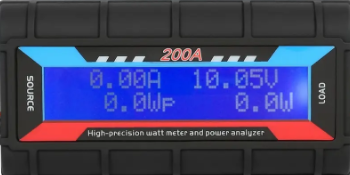
 Design with watt meter in Cirkit Designer
Design with watt meter in Cirkit DesignerIntroduction
A watt meter is an instrument used to measure the electrical power in watts of any given circuit. It is capable of measuring both AC and DC power, making it a versatile tool for a wide range of applications. This component is essential for monitoring energy consumption, evaluating system efficiency, and diagnosing power-related issues in electrical circuits.
Explore Projects Built with watt meter
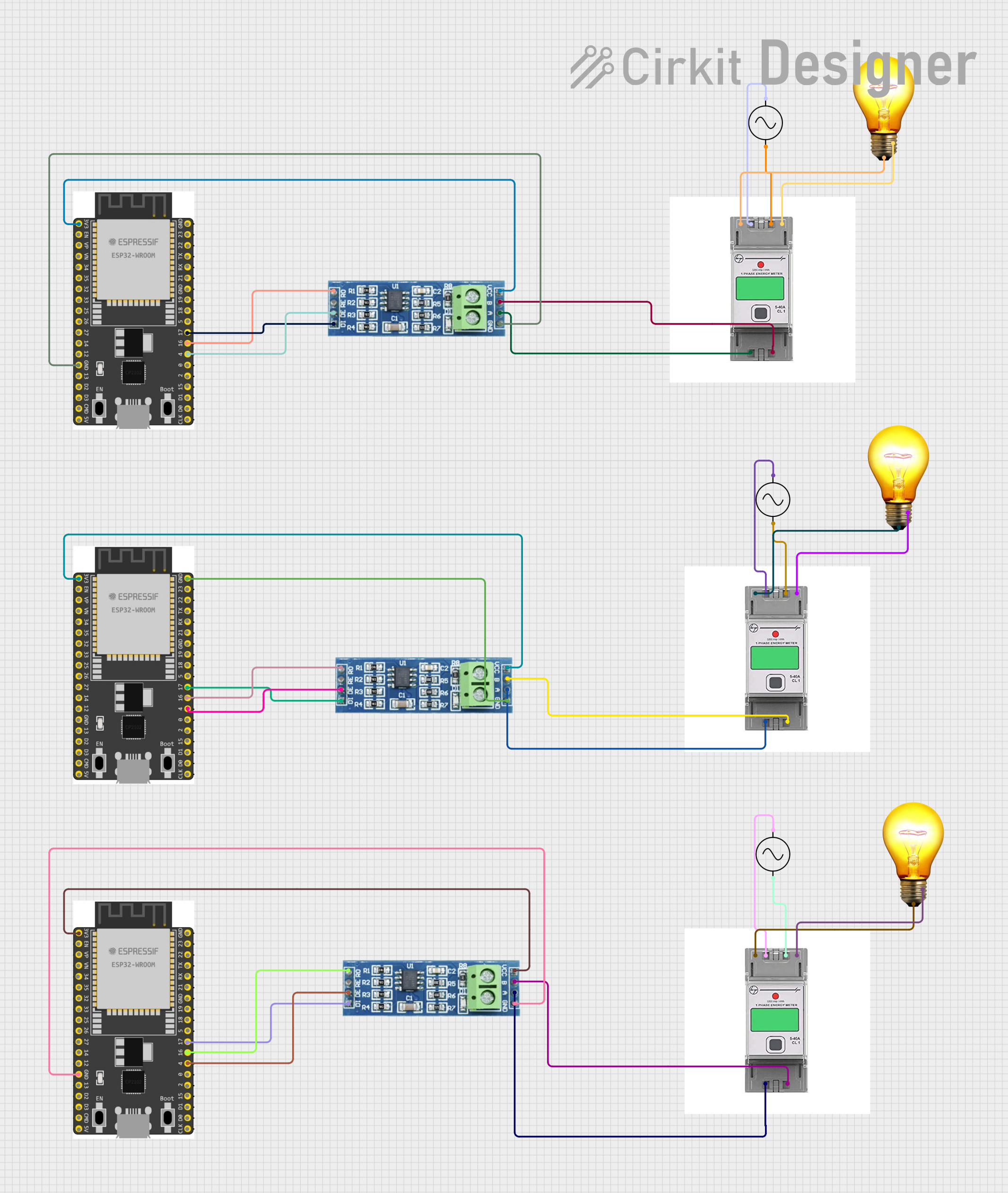
 Open Project in Cirkit Designer
Open Project in Cirkit Designer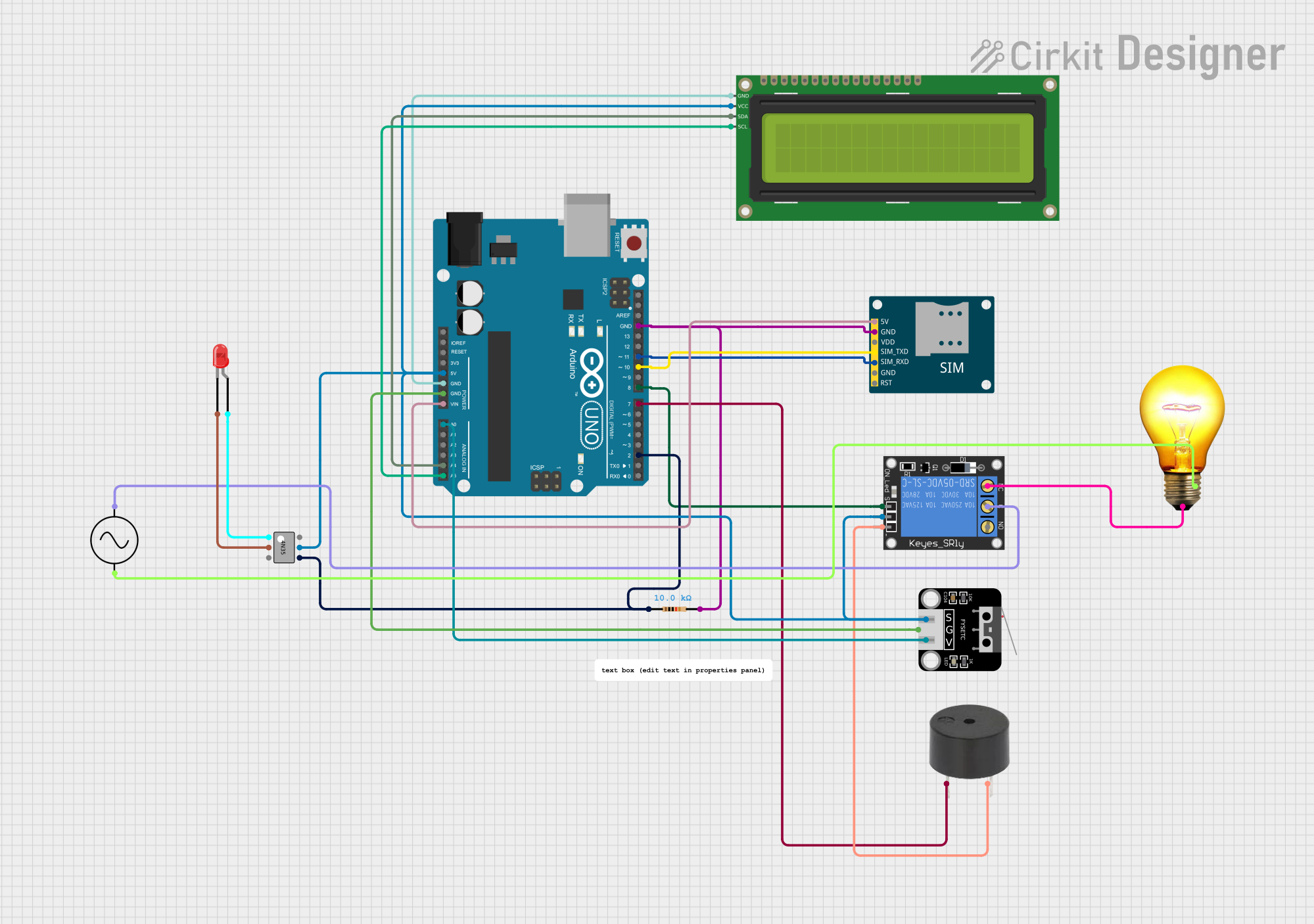
 Open Project in Cirkit Designer
Open Project in Cirkit Designer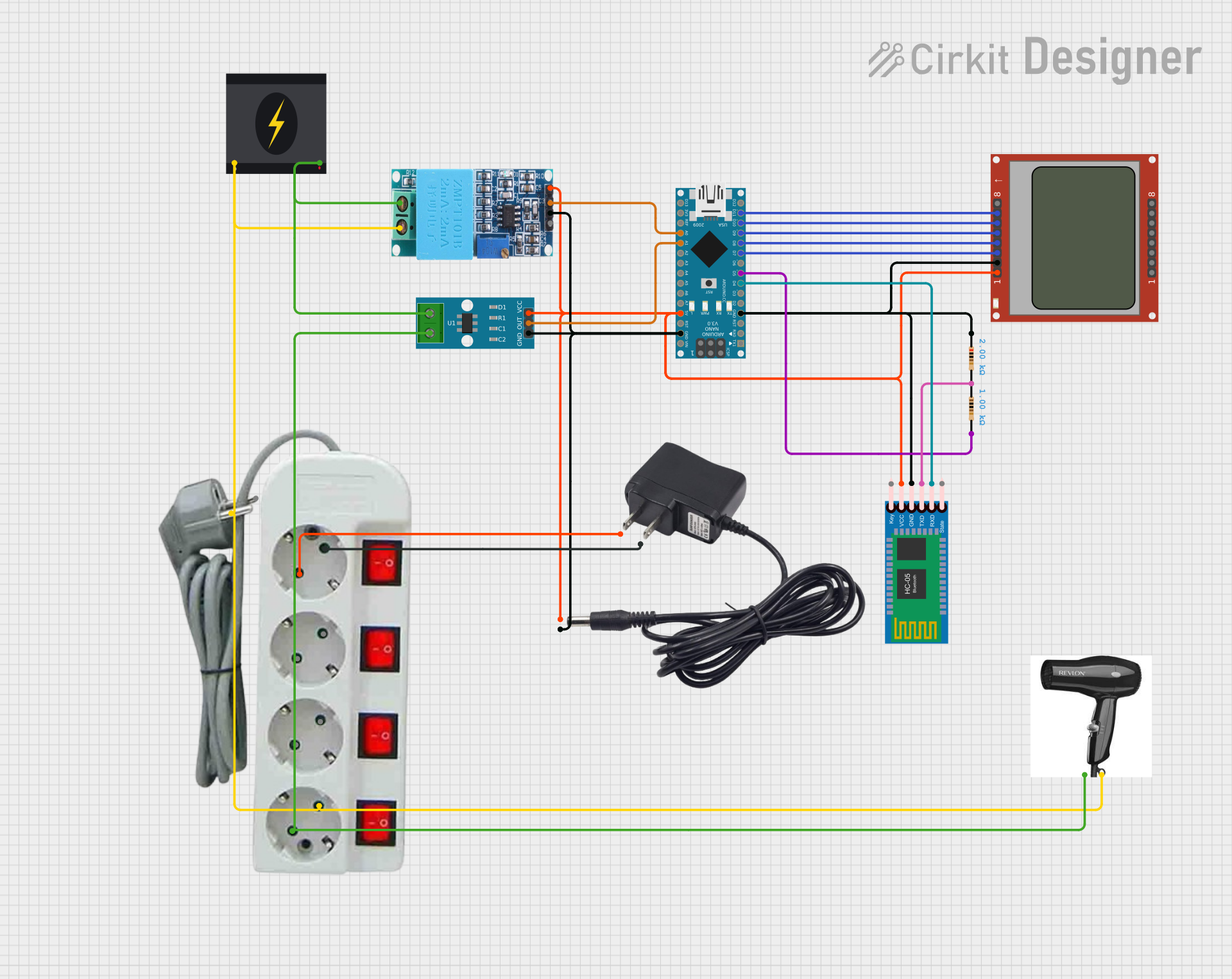
 Open Project in Cirkit Designer
Open Project in Cirkit Designer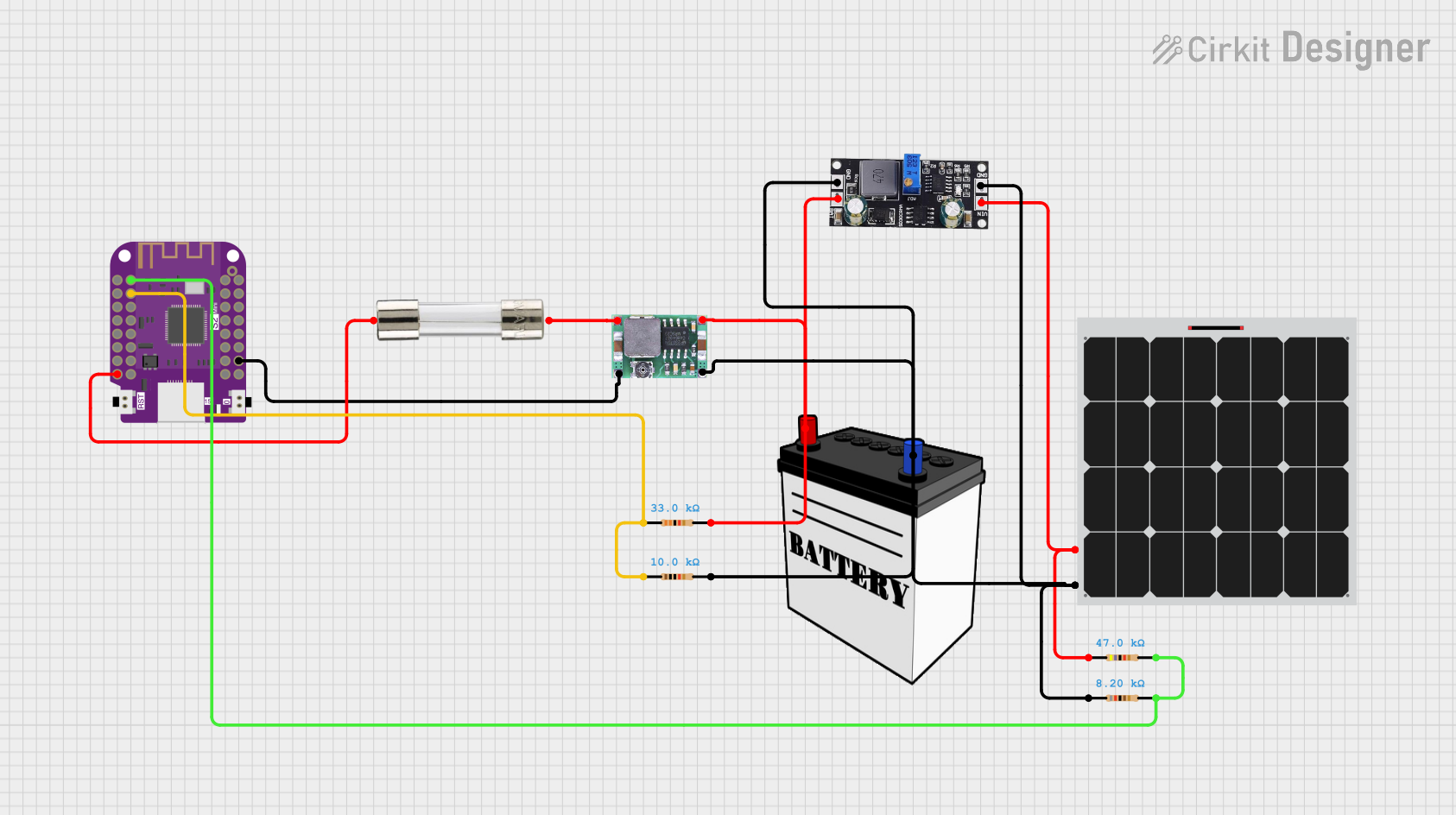
 Open Project in Cirkit Designer
Open Project in Cirkit DesignerExplore Projects Built with watt meter

 Open Project in Cirkit Designer
Open Project in Cirkit Designer
 Open Project in Cirkit Designer
Open Project in Cirkit Designer
 Open Project in Cirkit Designer
Open Project in Cirkit Designer
 Open Project in Cirkit Designer
Open Project in Cirkit DesignerCommon Applications and Use Cases
- Monitoring power consumption in household appliances
- Evaluating the efficiency of electrical devices
- Measuring power output in renewable energy systems (e.g., solar panels)
- Troubleshooting power-related issues in circuits
- Educational purposes in electronics and electrical engineering
Technical Specifications
The Arduino Watt Meter (Manufacturer Part ID: UNO) is designed to work seamlessly with Arduino-based systems. Below are the key technical details:
General Specifications
| Parameter | Value |
|---|---|
| Operating Voltage | 5V DC (via Arduino UNO) |
| Measurement Range | 0 - 250V AC/DC |
| Current Measurement | 0 - 20A |
| Power Measurement Range | 0 - 5000W |
| Accuracy | ±1% |
| Communication Interface | Analog or I2C (via sensors) |
Pin Configuration and Descriptions
The watt meter typically interfaces with an Arduino UNO using external sensors (e.g., voltage and current sensors). Below is an example pin configuration for a common setup:
Voltage Sensor (e.g., ZMPT101B)
| Pin Name | Description |
|---|---|
| VCC | Power supply (5V from Arduino) |
| GND | Ground |
| OUT | Voltage signal output |
Current Sensor (e.g., ACS712)
| Pin Name | Description |
|---|---|
| VCC | Power supply (5V from Arduino) |
| GND | Ground |
| OUT | Current signal output |
Usage Instructions
How to Use the Watt Meter in a Circuit
Connect the Voltage Sensor:
- Connect the
VCCpin of the voltage sensor to the 5V pin on the Arduino UNO. - Connect the
GNDpin of the voltage sensor to the GND pin on the Arduino UNO. - Connect the
OUTpin of the voltage sensor to an analog input pin (e.g., A0) on the Arduino UNO.
- Connect the
Connect the Current Sensor:
- Connect the
VCCpin of the current sensor to the 5V pin on the Arduino UNO. - Connect the
GNDpin of the current sensor to the GND pin on the Arduino UNO. - Connect the
OUTpin of the current sensor to another analog input pin (e.g., A1) on the Arduino UNO.
- Connect the
Load the Arduino Code:
- Use the provided Arduino code to calculate voltage, current, and power.
Power the Circuit:
- Supply power to the Arduino UNO and the circuit under test.
Monitor the Readings:
- View the calculated power readings on the Arduino Serial Monitor.
Important Considerations and Best Practices
- Ensure that the voltage and current sensors are rated for the expected range of your circuit.
- Avoid exceeding the maximum voltage and current ratings to prevent damage to the sensors or Arduino.
- Use proper isolation techniques when measuring high-voltage AC circuits.
- Calibrate the sensors for accurate readings.
Example Arduino Code
Below is an example Arduino sketch for measuring power using a voltage sensor and a current sensor:
// Watt Meter Example Code
// Measures voltage, current, and calculates power
// Connect voltage sensor to A0 and current sensor to A1
const int voltagePin = A0; // Analog pin for voltage sensor
const int currentPin = A1; // Analog pin for current sensor
float voltage = 0.0; // Variable to store voltage reading
float current = 0.0; // Variable to store current reading
float power = 0.0; // Variable to store calculated power
void setup() {
Serial.begin(9600); // Initialize serial communication
}
void loop() {
// Read voltage sensor value
int voltageRaw = analogRead(voltagePin);
voltage = (voltageRaw * 5.0) / 1023.0; // Convert to voltage (assuming 5V ADC)
// Read current sensor value
int currentRaw = analogRead(currentPin);
current = (currentRaw * 5.0) / 1023.0; // Convert to current (assuming 5V ADC)
// Calculate power
power = voltage * current;
// Print readings to Serial Monitor
Serial.print("Voltage: ");
Serial.print(voltage);
Serial.print(" V, Current: ");
Serial.print(current);
Serial.print(" A, Power: ");
Serial.print(power);
Serial.println(" W");
delay(1000); // Wait 1 second before next reading
}
Troubleshooting and FAQs
Common Issues and Solutions
Incorrect Readings:
- Cause: Sensors are not calibrated.
- Solution: Calibrate the sensors using a known voltage and current source.
No Output on Serial Monitor:
- Cause: Serial communication is not initialized or incorrect COM port is selected.
- Solution: Ensure
Serial.begin(9600)is in the code and select the correct COM port in the Arduino IDE.
Overheating Sensors:
- Cause: Exceeding the maximum voltage or current rating.
- Solution: Verify that the circuit's voltage and current are within the sensor's specifications.
Fluctuating Power Readings:
- Cause: Electrical noise or unstable power supply.
- Solution: Use capacitors for noise filtering and ensure a stable power source.
FAQs
Q: Can this watt meter measure both AC and DC power?
A: Yes, with appropriate sensors, it can measure both AC and DC power. Ensure the sensors are compatible with the type of power being measured.
Q: How do I improve the accuracy of the readings?
A: Calibrate the sensors, use high-quality components, and minimize electrical noise in the circuit.
Q: Can I use this watt meter for high-power applications?
A: Yes, but ensure the sensors and Arduino are rated for the voltage and current levels in your application. Use external relays or transformers if necessary.
Q: Is this watt meter suitable for industrial use?
A: This setup is primarily for educational and hobbyist purposes. For industrial applications, consider using professional-grade watt meters.